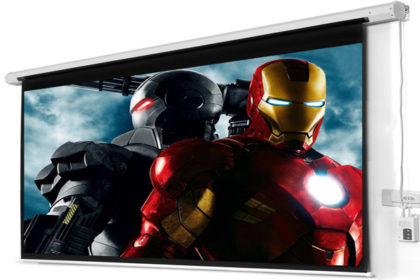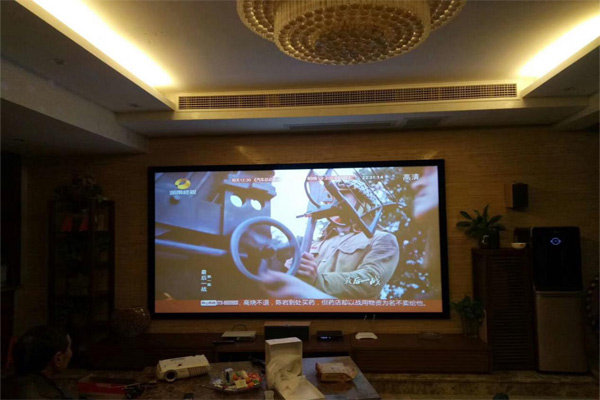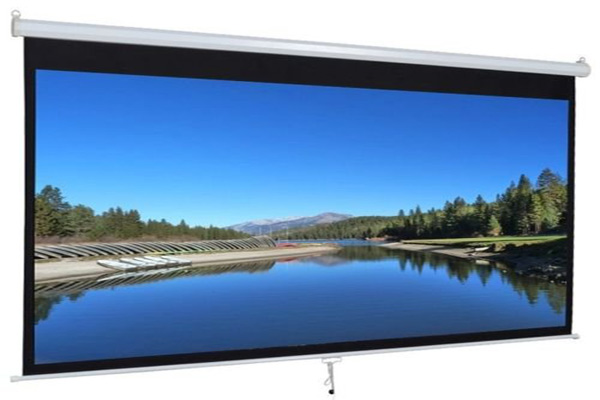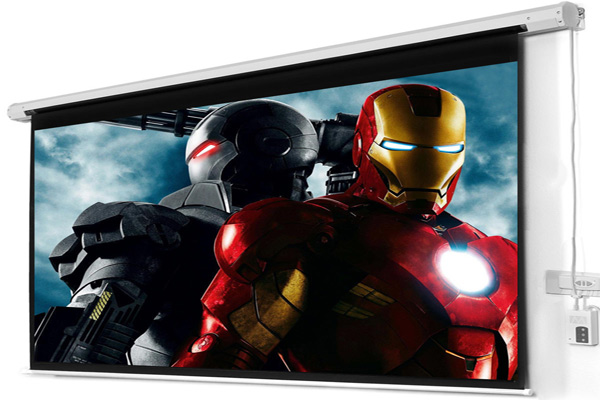
In the commercial movie theaters, the screen is a reflective surface that may be either aluminized (for high contrast in moderate ambient light) or a white surface with small glass beads (for high brilliance under dark conditions). The screen also has hundreds of small, evenly spaced holes to allow air to and from the speakers and subwoofer, which often are directly behind it.
Fixed-frame screens provide the greatest level of uniform tension on the screens surface, resulting in the optimal image quality. They are often used in home theater and professional environments where the screen does not need to be recessed into the case.

Pull-down screens (also known as manual wall screens) are often used in spaces where a permanently installed screen would require too much space. These commonly use painted fabric that is rolled in the screen case when not used, making them less obtrusive when the screen is not in use.

Electric screens can be wall mounted, ceiling mounted or ceiling recessed. These are often larger screens, though electric screens are available for home theater use as well. Electric screens are similar to pull-down screens, but instead of the screen being pulled down manually, an electric motor raises and lowers the screen. Electric screens are usually raised or lowered using either a remote control or wall-mounted switch, although some projectors are equipped with an interface that connects to the screen and automatically lowers the screen when the projector is switched on and raises it when the projector is switched off.



